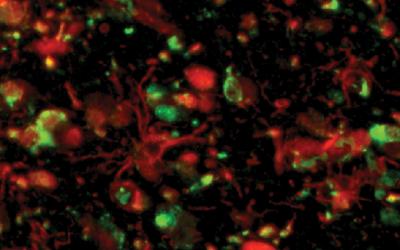
Can a Measles Virus Treat Medulloblastoma in Children?
Medulloblastoma (MB) is the most common malignant brain tumor in children. Of the four MB subtypes, group 3 tumors have the worst prognosis, with a five-year survival rate approaching zero. “Those who do survive face severe, lifelong debilitating sequelae from the radiation therapy used in standard treatment,” says pediatric neurosurgeon Corey Raffel, MD, PhD.
In a hopeful sign, the last few years have demonstrated that oncolytic measles virus (MV) could be effective against MB tumors in immunodeficient animal models, but these models do not allow examination of the effect of the immune system on MV therapy. To address this concern, Raffel’s lab has developed a unique mouse medulloblastoma cell line that is infected by MV, allows replication of MV, forms group 3 MB-like tumors in the brain of immune-competent mice and is effectively killed by MV, with a complete response in 60 percent of MV-treated mice, according to a study published in Neuro-Oncology.1
“We hypothesize that the combination of MV therapy and immune checkpoint inhibition – which has already been proven effective in some cases – will be synergistic in the treatment of MB tumors,” says Raffel. Now he is part of a UCSF team in the Pacific Pediatric Neuro-Oncology Consortium (PNOC) that has initiated a phase I clinical trial to study the safety of a modified MV in children and young adults with recurrent medulloblastoma or atypical teratoid rhabdoid tumor (ATRT). In cases where radiation and chemotherapy have failed, trial participants will receive measles virus into the recurrent tumor in the brain and/or into the fluid space around the brain and spinal cord, depending on tumor location.
“As we demonstrate safety, we will treat children with progressively increasing numbers of viral particles to determine how much virus we can give without causing intolerable side effects,” says Raffel. “We are hoping that this study will lead to additional trials to demonstrate the efficacy of measles virus in the treatment of medulloblastoma.”
References
- Lal S, Carrera D, Phillips JJ, Weiss WA, Raffel C. An oncolytic measles virus-sensitive Group 3 medulloblastoma model in immunecompetent mice. Neuro Oncol. 2018;20(12):1606-1615.

